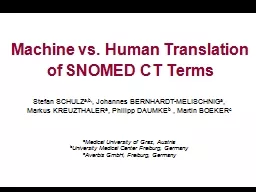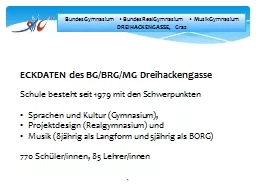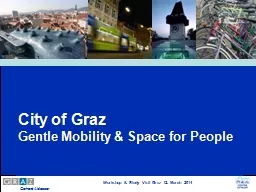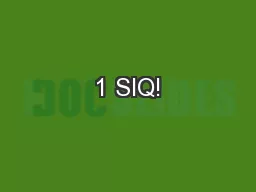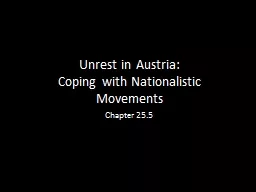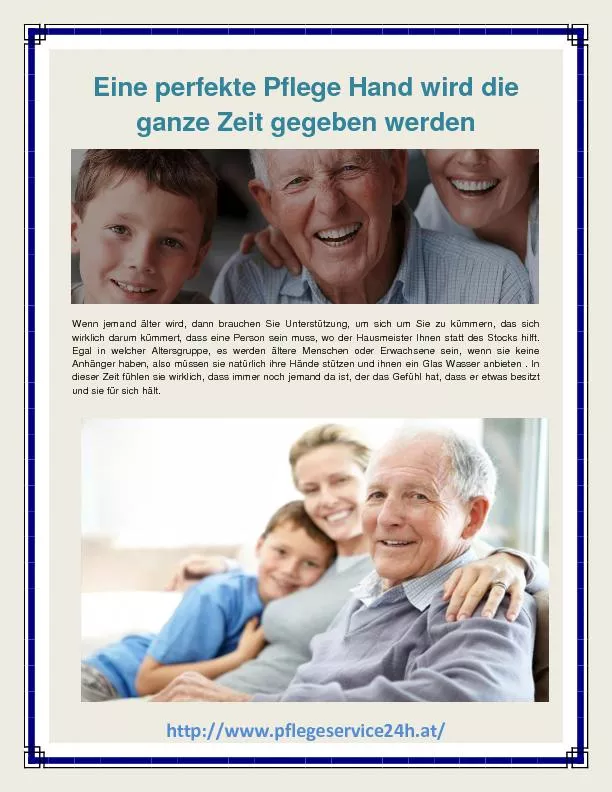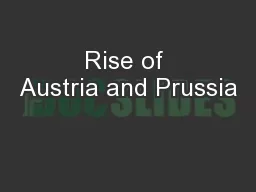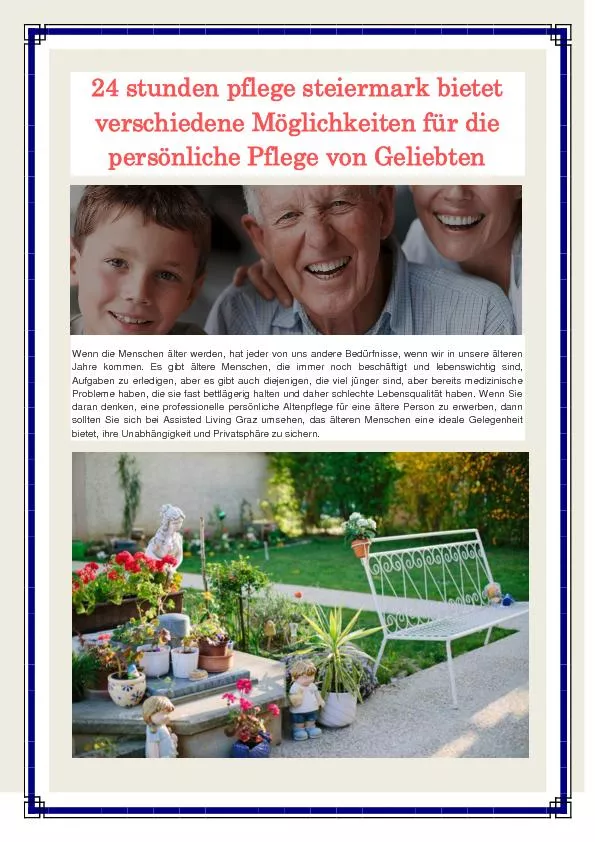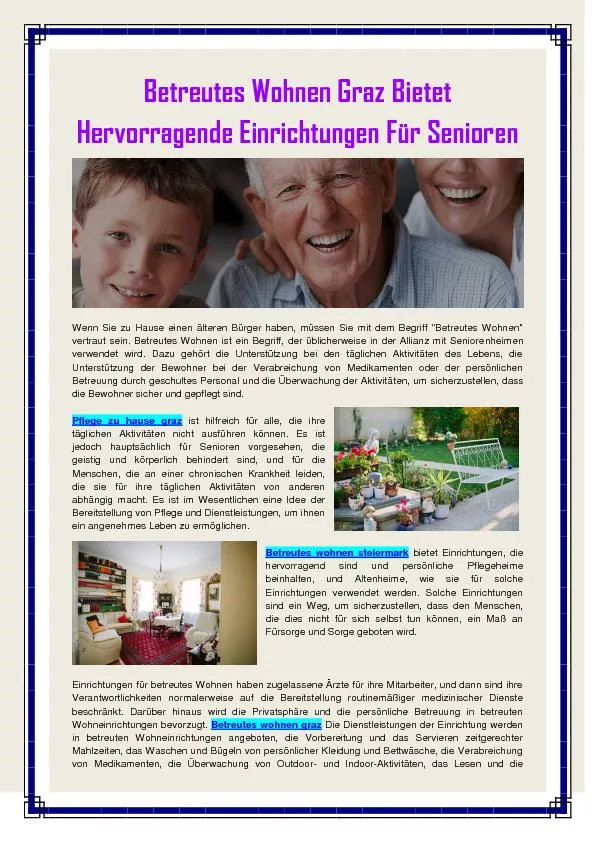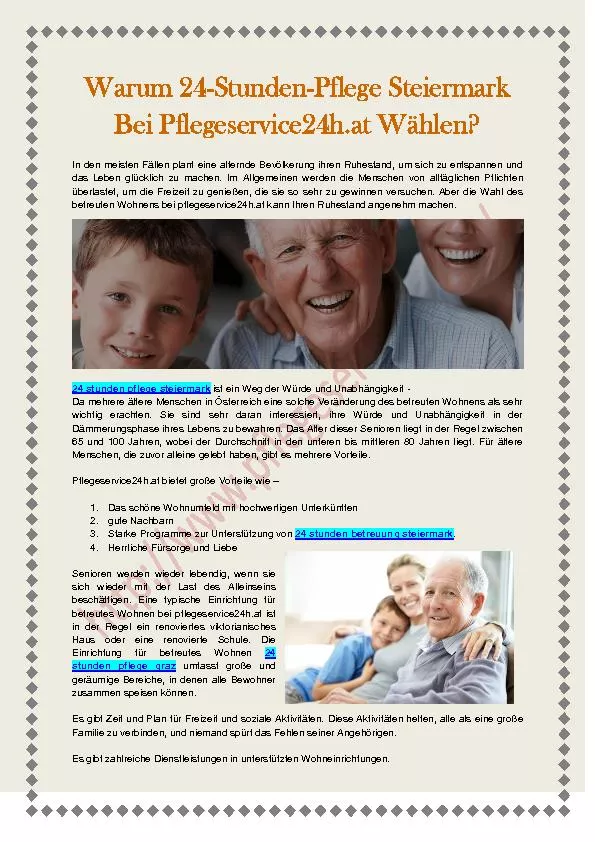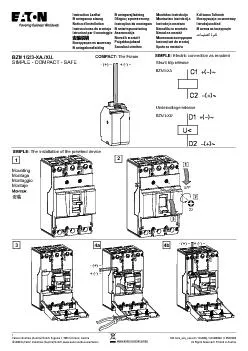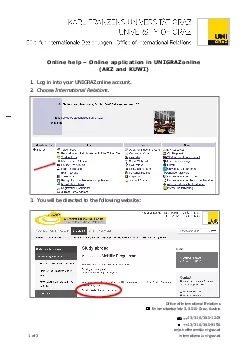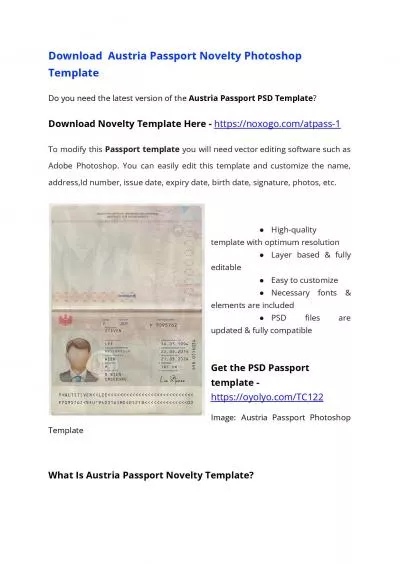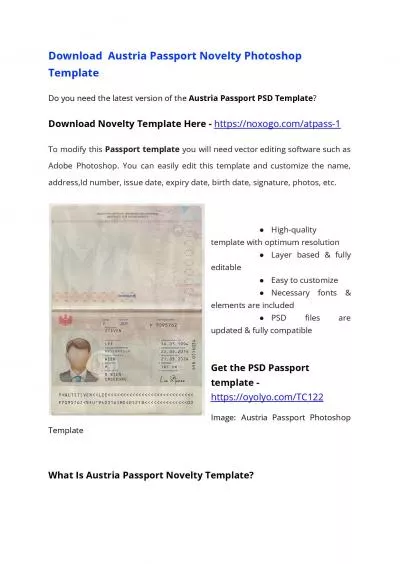PPT-a Medical University of Graz, Austria
Author : studmonkeybikers | Published Date : 2020-06-17
b University Medical Center Freiburg Germany c Averbis GmbH Freiburg Germany Machine vs Human Translation of SNOMED CT Terms Stefan SCHULZ ab Johannes BERNHARDT
Presentation Embed Code
Download Presentation
Download Presentation The PPT/PDF document "a Medical University of Graz, Austria" is the property of its rightful owner. Permission is granted to download and print the materials on this website for personal, non-commercial use only, and to display it on your personal computer provided you do not modify the materials and that you retain all copyright notices contained in the materials. By downloading content from our website, you accept the terms of this agreement.
a Medical University of Graz, Austria: Transcript
Download Rules Of Document
"a Medical University of Graz, Austria"The content belongs to its owner. You may download and print it for personal use, without modification, and keep all copyright notices. By downloading, you agree to these terms.
Related Documents

